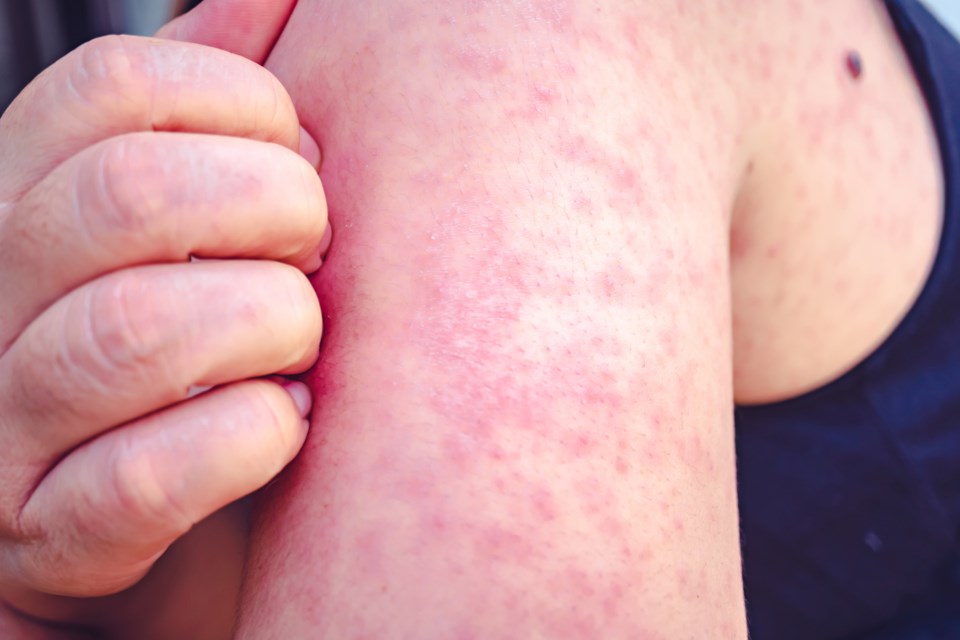KENORA — Heath officials are sounding the alarm about about possible measles exposure at the Toronto Pearson Airport.
Anyone who travelled through Pearson's Terminal 1 on the evening of March 2 is at risk, according to an advisory put out by the Northwestern Health Unit on Thursday afternoon.
"Measles is a highly contagious airborne illness that spreads easily. Anyone who was at the following location between the times listed is considered exposed to measles," the advisory stated.
The window of possible exposure was between 4:50 and 7:40 p.m. EST.
The health unit is advising anyone who was in Terminal 1 between those hours to ensure they are vaccinated, watch for symptoms and avoid contact with anyone who is at-risk of severe complications.
Anyone exposed to measles can develop symptoms up to 21 days after the exposure and the health unit urges anyone who may have been exposed to continue monitoring for measles symptoms until March 23.
Symptoms can include a red blotchy rash (lasting four to seven days), small spots with white centres inside the mouth, sore eyes and sensitivity to light as well as a high fever and cold-like symptoms, including a cough or runny nose.
Even those who are vaccinated should watch for symptoms, according to the notice from the Northwestern Health Unit.
Two doses of the vaccine are required for immunity and anyone who isn't sure of their vaccination status is asked to check with their health care provider or their health unit.
Anyone who could have been exposed should also avoid contact with those who are at higher risk until March 23 has passed, said the health unit, even with no symptoms. That includes infants under 12 months and those who are pregnant, as well as schools and daycare centres, and mom and baby groups. People who are immunocompromised are also at risk and health care settings should be avoided.
Although the Northwestern Health Unit is highlighting the specific exposure at Pearson on March 2, Thunder Bay District Health Unit officials are encouraging all travellers to assume they could be exposed.
"Given all the travel and the travellers from different parts of the world, there's likely a lot more exposures happening in those areas, like in an airport, for example, where a lot of travellers are moving through, where you're on a plane with various other people and you don't know where they're coming from," said Dr. Janet DeMille, medical officer of health and chief executive officer with the TBDHU.
"Measles can spread before somebody gets sick," said DeMille. "It's about four days before people get that characteristic measles rash – four or five days (that) they are spreading on the virus. And measles is one of the most infectious viruses."
Ontario's chief medical officer of heath, Dr. Kieran Moore, issued a statement on Friday encouraging vaccination and warning of the increasing number of cases in the province.
"Over the last several weeks, we have seen the number of new measles cases rise to 173 bringing the total number of confirmed cases in Ontario to 350 since 2024, including 31 hospitalizations.
"This is the most measles cases Ontario has seen in over a decade. It is critical we work together to mitigate further spread of this vaccine-preventable disease."
According to the statement, 96 per cent of cases in the province are among people who are not immunized or don't know their immunization status.
Moore encourages all Ontarians to ensure they and their families are vaccinated.
"Vaccination is the most effective way to limit the spread of measles and protect yourself and your loved ones. The measles, mumps and rubella (MMR) vaccine has been in use for more than 50 years and is proven to be one of the safest and most effective vaccines available."
DeMille said the Thunder Bay health unit isn't aware of any active cases of measles in its catchment area. The last confirmed case here, she said, was back in 1997. Several other cases were reported throughout the 1990s.
